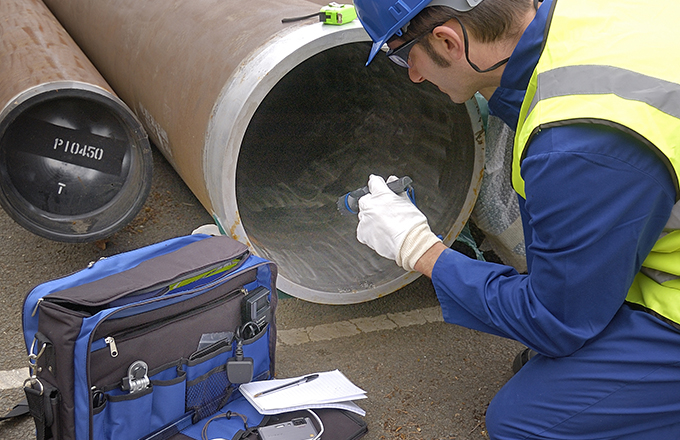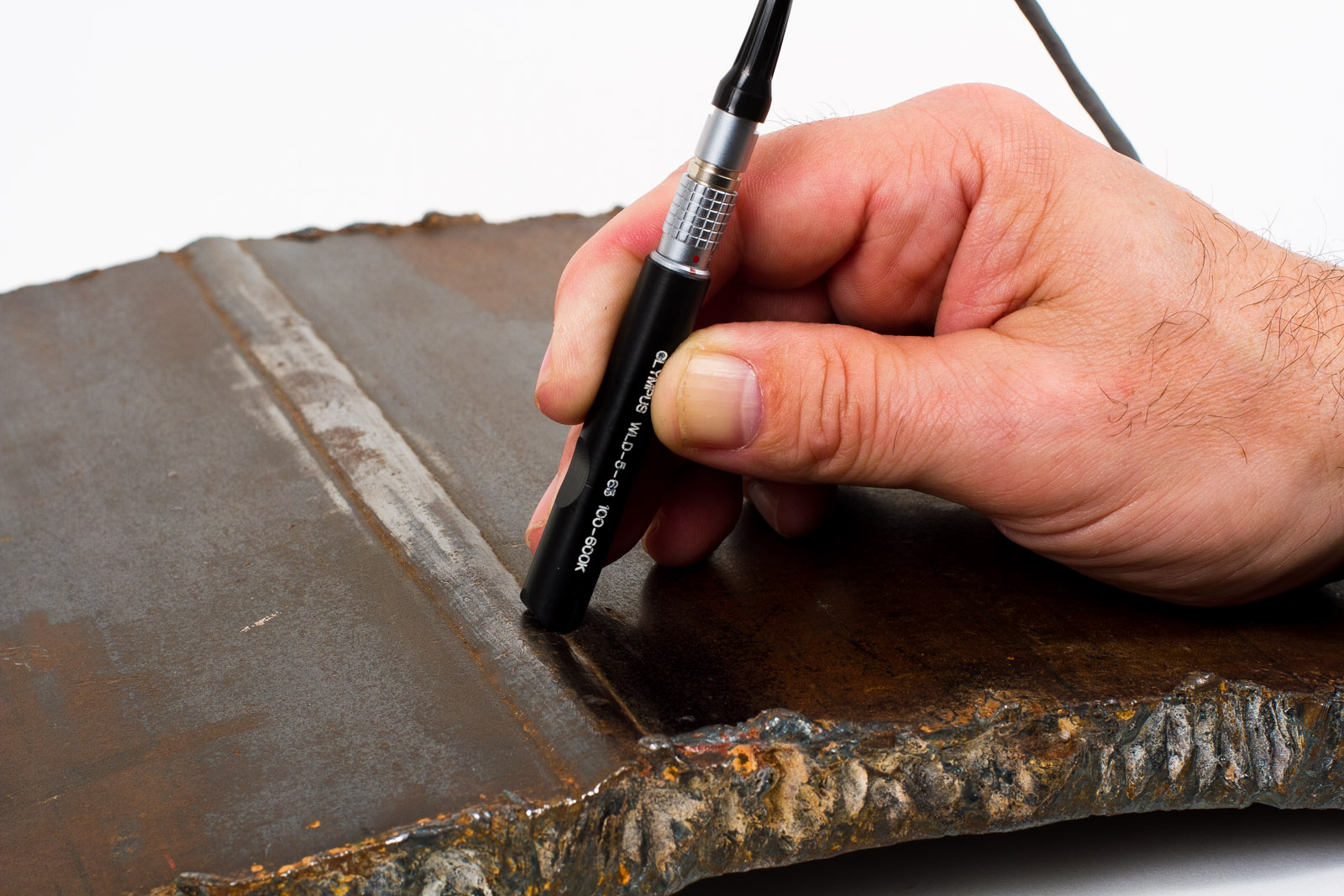Why Select Professional Welding Inspection Milwaukee for Your Projects?
Why Select Professional Welding Inspection Milwaukee for Your Projects?
Blog Article
A Thorough List for Effective Welding Assessment Practices
In the realm of welding, the honesty of structures is critical, necessitating a strenuous strategy to evaluation practices. A thorough list functions as an essential tool in ensuring adherence to market requirements, including important pre-welding, in-process, and post-welding assessments. By systematically attending to product confirmation, weld quality, and thorough documents, companies can dramatically boost safety and security and efficiency. What details elements should be focused on in each phase to accomplish ideal results? Discovering these essential components can yield insights that exceptionally effect welding procedures.
Understanding Welding Standards
Welding criteria play an important function in guaranteeing the quality and safety and security of welded frameworks and parts. These standards develop the standards for products, treatments, screening, and inspection, thereby giving a framework for constant top quality guarantee in welding processes. Numerous organizations, including the American Welding Society (AWS), the International Organization for Standardization (ISO), and the American Society of Mechanical Designers (ASME), have actually established detailed requirements that control different elements of welding.
Understanding welding requirements is important for specialists in the field, as adherence to these guidelines lessens the danger of problems and failings in welded joints. These standards cover specific needs for weld high quality, including appropriate resistances, the sort of welding strategies to be utilized, and the qualifications required for welders and inspectors.
Pre-Welding Inspection Actions
Prior to any kind of welding procedure starts, a thorough pre-welding evaluation is vital to recognize possible problems that might endanger the high quality of the weld. This first action functions as a crucial structure for making certain conformity with applicable welding codes and criteria.
The very first step in the pre-welding assessment is to confirm the materials being made use of. This includes checking for the appropriate kind and grade of steels as specified in the job documentation. Next off, it is essential to inspect the fit-up of the parts to guarantee appropriate placement and joint configuration. Misalignment can result in poor infiltration and architectural weaknesses.
In addition, reviewing the sanitation of the surface areas is essential; impurities such as corrosion, paint, or oil can negatively impact the high quality of the weld. Following this, a complete analysis of the welding devices must be carried out, making sure that it is calibrated and in great working condition.
Last but not least, assessing the credentials of the welding employees is critical. Welders have to have the needed accreditations and experience to carry out the particular welds required for the task. By sticking to these pre-welding evaluation steps, the chance of issues and failings in the final weld can be significantly lowered.

In-Process Assessment Strategies
In-process evaluation strategies play a vital function in ensuring the stability and top quality of welds as they are being executed. These methods permit inspectors to determine flaws or deviations from specs in genuine time, therefore avoiding expensive fixings and ensuring adherence to design demands.
One secret technique involves aesthetic examination, where assessors evaluate the weld grain for uniformity, infiltration, and correct account. This can be complemented by the use of evaluates to determine weld measurements, making sure conformity with fixed resistances. In addition, the execution of non-destructive screening (NDT) approaches, such as read this post here ultrasonic screening or magnetic fragment screening, throughout the welding procedure can expose subsurface problems that may not be visible externally.
Another essential aspect is keeping track of welding specifications, including voltage, amperage, and travel rate. Uniformity in these specifications is critical for achieving optimum weld top quality. Recording these specifications during the welding operation offers a deducible record for future reference.
Training employees in appropriate assessment methods and making use of appropriate devices improves the effectiveness of in-process inspections. By incorporating these methods, organizations can achieve greater high quality welds, reduce rework, and inevitably make sure the security and reliability of bonded structures.
Post-Welding Top Quality Checks
Complying with the completion of welding procedures, post-welding high quality checks are critical to validate that the welds satisfy all defined needs and requirements. These checks are essential for making certain the stability and resilience of the bonded joints. The evaluation procedure usually begins with a visual examination, examining for surface flaws such as cracks, porosity, or incomplete blend.
Consequently, non-destructive screening (NDT) methods, such as ultrasonic screening, radiographic you can try this out testing, or magnetic bit screening, may be utilized to detect interior imperfections that are not visible to the nude eye. Each approach has its distinct benefits and is picked based on the weld's place, product type, and the nature of the application.
Furthermore, validating dimensional accuracy is a crucial facet of post-welding quality checks. This includes gauging the weld's dimension, placement, and profile to guarantee compliance with design specifications. Lastly, analyzing the mechanical buildings of the weld, including tensile strength and ductility, can offer additional guarantee of efficiency under functional problems. Generally, detailed post-welding examinations are vital for maintaining efficiency, safety and security, and adherence to governing and sector criteria.
Paperwork and Coverage
Exactly how can effective documents and reporting enhance the welding examination process? Exact documentation and detailed reporting are crucial parts that guarantee the honesty and high quality of welding procedures. Welding Inspection Milwaukee. They act as an official document of evaluation searchings for, facilitating responsibility and traceability in conformity with industry requirements

A well-structured reporting system makes it possible for assessors to clearly interact any type of disparities, non-conformances, or areas needing renovation. This openness cultivates an environment of continuous improvement, as stakeholders can easily evaluate previous efficiency and carry out rehabilitative activities.
In addition, reliable documents consists of thorough documents such as welding treatment requirements (WPS), welder credentials, and examination lists. These components provide a structure for examining weld high quality and adherence to developed guidelines. In the occasion of disagreements or top quality concerns, thorough paperwork functions as a dependable referral, reducing ambiguity and protecting all parties entailed.
Last but not least, preserving organized records aids in training and licensing workers, guaranteeing that market best practices are promoted. Eventually, precise documentation and reporting not just improve the welding evaluation procedure yet likewise add to the total security and reliability of bonded structures.

Verdict
Finally, a detailed list for reliable welding examination practices is important for making certain top quality and safety in welded frameworks. Adherence to developed welding criteria, meticulous pre-welding Full Report evaluations, extensive in-process analyses, and thorough post-welding quality checks collectively add to the stability of bonded joints. In addition, attentive documents and reporting of inspection findings enhance accountability and help with constant enhancement. Carrying out these methods will dramatically assist in conformity with sector requirements and eventually promote a society of high quality in welding operations.
Welding standards play a crucial duty in making sure the high quality and safety of bonded parts and frameworks. Various companies, consisting of the American Welding Society (AWS), the International Company for Standardization (ISO), and the American Society of Mechanical Engineers (ASME), have actually established comprehensive requirements that govern various elements of welding.
Following the conclusion of welding operations, post-welding top quality checks are important to confirm that the welds fulfill all specified requirements and requirements - Welding Inspection Milwaukee.In conclusion, a thorough checklist for reliable welding evaluation techniques is important for making certain high quality and safety and security in welded structures. Adherence to developed welding criteria, thorough pre-welding assessments, rigorous in-process assessments, and thorough post-welding top quality checks jointly add to the integrity of welded joints
Report this page